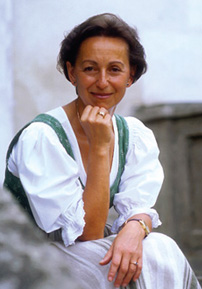

Among the farmers who began applying biodynamic practices to grape growing, the Saahs of Nikolaihof tend one of the legendary Wachau estates. They ferment their riesling in large, old wooden barrels. They neither add yeast, nor do they control the temperature; instead of the reliance on stainless steel, inert gases, clean, efficient yeasts and other prosthetic tools, they rely on the strength of their vines and the health of their farm. Aside from the complexity of the wine, the most magical aspect of their 2006 Riesling is its freshness.
The Saahs attempt to pick most of their grapes on fruit days, according to the biodynamic calendar established by Maria Thun. A leader in biodynamic farming, Thun studied how her plants reacted to the relationship of the moon and constellations. While few would deny the force that the moon has on tides, many contemporary winemakers ignore the force of the moon on the wine resting in barrel. Thun considered more complex forces in mapping out how plants interact with the moon and stars. She created a calendar based on these relationships, mapping out fruit days, root days, leaf days and flower days, relating a plant’s response to the gravitational pull of the moon, and perhaps much more subtle gravitational effects of planets and stars.
The Saahs also wait to harvest until after the grapes have stopped accumulating sugar and start to dehydrate. They believe harvest on fruit days helps to extend a wine’s ability to age, and also may emphasize earthiness in the wine from deep—rooted vines.
Nicolas Joly 2005 Savennières: Le Vieux Clos (France)
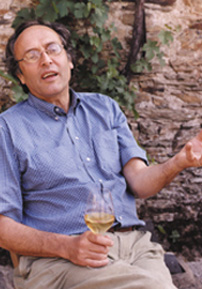

Nicolas Joly was another early adapter, reading about biodynamics in 1980 and converting his family’s vineyards in 1984. Those vineyards include the Clos de la Coulée de Serrant, widely considered one of the greatest vineyards of France. Joly continues to study homeopathic remedies to resolve imbalances in his vineyard or fine—tune the annual cycle of his vines. In his book, “Wine from Sky to Earth,” he describes the biodynamic preparation of silica—the farmer grinds quartz into a powder, ages it underground in the horn of a cow, dynamizes it in solution by stirring it for more than an hour, first in one direction, then in another. He sprays a dilution of the liquid over the vines to promote the plant’s ability to take in light.
Joly actively employs teas for homeopathic assistance to the vines. Some of the various teas he dynamizes include tea from nettles, garlic, horsetail, rose hip and others. Each has an influence in balancing the energy and health of the vine, or of the farm itself.
The preparations combine selected plants aged in the soil in vessels from the farm’s animals; whether used to enhance the microflora and —fauna in compost or dynamized to spray over the vines, these preparations carry a complex message. The teas carry a simpler message, one used to balance forces in the vineyard or farm that have responded excessively or unsuccessfully to the challenges of a season. Teas might be used to convince an expanding population of insects to decamp, to emphasize or diminish an aspect of plant growth in the roots, leaves, flowers, or fruit, or to accelerate or slow the annual cycle of the plant. In 2005, the vintage of this bottle of Le Vieux Clos, Joly used nettle teas to support sap circulation during an unusually dry season; he sprayed lime teas and seaweed teas on the leaves to protect from the vines from the heat. This vintage of Le Vieux Clos, despite the dry weather of the growing season, shows vigor beneath its expansive mineral flavors.
Marcel Deiss 2003 Alsace Burg (France)
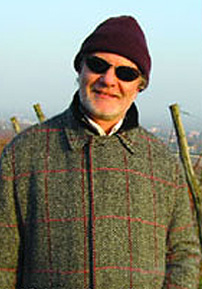

In 2000, Deiss began to remove any mention of varieties from his single–vineyard wines—a practice that goes against tradition in Alsace, where most wines are made and sold by variety. His Burg vineyard, which includes riesling and gewürztraminer, is presented simply as Burg. Most modern growers have separated their vines to farm each as effectively and efficiently as possible. Different varieties, they would argue, ripen at different times; the highest quality wine will be made from grapes picked at peak ripeness.
There was a time, however, when many vineyards were mixed, when a diverse population of vines, if tended with care, would interact during flowering, some helping others to pollinate by attracting insects that show less interest in other vines. Such a vineyard would, perhaps, create a genetic talent pool unlike the neighbors’ or the New World clone across the sea where one vine provided exact genetic replicas for an entire vineyard. In the case of Burg, this warm vintage created a plush wine with ripe, tropical fruit notes, yet it’s refreshed by mineral acidity and a subtle spiciness that lasts.
Domaine Leflaive 2000 Puligny Montrachet Clavoillon (France)
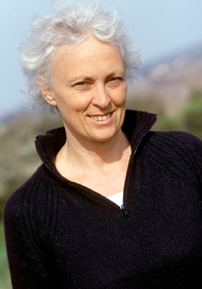

Anne–Claude Leflaive remarked on the ability of her wines to resist oxidation when I spoke with her about biodynamics at Domaine Leflaive. She had decided to try the farming practice when the estate’s old vines in Bienvenues Batard Montrachet were struggling; rather than replant, she and enologist Pierre Morey began using biodynamic preparations to rebuild the soil. In order to justify these activities to her board and shareholders, Leflaive commissioned soil studies to compare vineyards farmed under organics and biodynamics. The studies showed a marked difference in the diversity of life in the soil; meanwhile, Leflaive began to note a marked difference in the domaine’s wines.
The old vineyard is still producing; all of Domaine Leflaive has been farmed biodynamically since 1998. And the 2000 Clavoillon, from a difficult vintage, was the wine of the tasting at VinItaly—a complex Puligny that gains subtle nuances with air.
Movia 1999 Goriska Brda Veliko Bianco & Movia 2006 Goriska Brda Lunar (Slovenia)
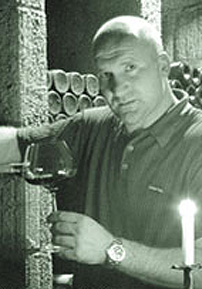

Ales Kristancic of Movia in Slovenia joined me on the panel for the presentation. As we tasted his Lunar, a ribolla gialla made without any added sulfur, Kristancic spoke about how his vineyard could sustain a wine with such minimal intervention. His topic: sex. How much sex there was going on in the vineyard, among the insects, among the vines at flowering.
Putting that aside, Kristancic is one of the most technologically savvy wine producers I’ve met, and his design for shepherding a natural wine through fermentation without any additional sulfur is fascinating (see W&S, Fall 2006). The whole grapes go directly into barrels Kristancic designed specifically for this wine and are only touched again when it is time to siphon the wine for bottling. The process is designed to create a clean wine with barely any intervention by man.
Movia’s Veliko Bianco is a blend of ribolla with chardonnay, sauvignon and pinot grigio, the blend exotic with ripe peach, preserved lemon and floral notes of narcissus. It’s remarkably complex and looks to still be relatively youthful. A few weeks after the Vinitaly tasting, Ales poured a 1990 Veliko Bianco out of magnum that was still fresh and beautifully complex.
Descendientes de J. Palacios 2004 Bierzo Villa de Corullón (Spain)
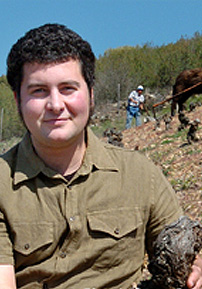

Ricardo Perez–Palacios had also joined the panel at VinItaly. He had become interested in biodynamic farming as a teenager, and set out to explore it when he and his uncle, Alvaro Palacios, began assembling vineyards for an estate in Bierzo. For Perez–Palacios, biodynamics provided a way to connect with traditions that had been part of the farming practices in these ancient vineyards. He works all the vineyards using horses or mules. He’s not producing a wine that follows the contemporary machismo of high–extract, high–alcohol reds from Spain. His 2004 Villa de Corullón follows a different tradition, one of elegance and a more subtle strength. It’s a blend of different parcels in the village of Corullón, all with varied expositions and altitudes on steep slopes.
The soil is composed of layers of laminated slate, mostly horizontal, together with quartzite and sandstone with blends of clay. The wine is fermented in small wooden vats and macerated for more than one month, which Perez–Palacios found was the tradition in the region. It is aged for 15 to 20 months in new French oak barrels. Perez–Palacios does not use any selected yeast, allowing the fermentations to start naturally; he controls the temperature of the fermentation and the temperature of the aging cellar. Perez–Palacios says he only uses SO2 “for additions,” and does not use a pump for Villa de Corullón or his single–vineyard wines.
Emiliana 2005 Colchagua Coyam & Emiliana 2003 Colchagua “G” (Chile)
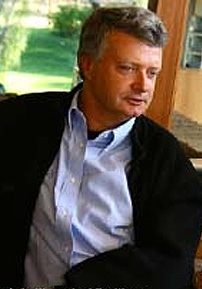

José Guilisasti set out to develop Emiliana’s organic vineyard project in 1998 — in Casablanca, Maipo and Colchagua, where his family built a winery, at Finca Los Robles. Guilisasti recruited Alvaro Espinoza, who then got Alan York involved (the two had worked together at Fetzer in 1998). York, Espinoza and Guilisasti worked to balance the water and soil (the earth influence) with the heat and light of the sun — by tuning their irrigation systems to the water retention in the soil (switching back to flood irrigation in some rockier parts of the vineyard); they reduced vine vigor by planting grasses in between rows and pruning to two fruiting canes instead of four.
They also invested substantially in watercourses to change the drainage in the vineyard and to develop wildlife corridors with native trees, herbs and flowering plants that would also encourage beneficial insects and bird life. The workers, rather than spraying chemicals, collect seeds from beneficial native species to plant in the corridors and watercourses. As the microfauna in those vineyards strengthens, Espinoza has begun to move away from efficient, inoculated yeast and has transitioned to completely indigenous yeast with the 2007 vintage.
G, the richest of Emiliana’s organically grown wines, is entirely from Los Robles in Colchagua; the soil there is a mixture of sand and clay, with rocky deposits higher up the hillsides. The 2003 G is syrah (55), cabernet sauvignon (15), carmenère (15) and merlot (15). Coyam 2005 is syrah (34), merlot (31), carmenère (17), cabernet sauvignon (12), malbec (3) and mourvèdre (2). The grapes are mostly from Los Robles, with a small percentage of cabernet and syrah from Maipo and Totihue.
Benziger 2004 Sonoma Mountain Tribute Red (US)
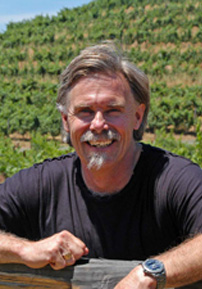

Benziger has since converted five other estate vineyards to biodynamics: Imagery, 3.5 acres in Sonoma Valley; 20 acres on the Sonoma Coast (planted ‘02); 32 acres at Sunny Slope in Sonoma Valley; 8.6 acres at San Remo Vineyard and 15 acres of Upper Ridge in Alexander Valley. In all, that’s just over 170 acres in biodynamic grapes.
York works with Benziger on Tribute, a blend from the Benziger home ranch. The vineyard is a bowl–shaped valley at the base of an extinct volcano: the soil is volcanic and complex, what Mike Benziger describes as “soil lasagna, with lots of diverse layers.” It includes clay loam, with up to 50 percent of rock; there’s also volcanic ash. The vines are from four to 20 years old, with roots that Benziger has measured to six feet in the fractures of the sub soil.
Benziger’s team harvests by hand at night, and hand sorts the grapes in the vineyard. The grapes are de–stemmed, the berries lightly broken and transferred into a tank via bins (without using a pump). There is a 3–5 day cold stabilization and then primary fermentation takes about 10 days with native yeast — a requirement for Demeter certification, Benziger points out. “We may add a very small amount of organic yeast nutrients to keep the yeast cells active,” he says. The temperature is controlled to remain in the 80 to 85 degree range, and the wine undergoes an extended maceration for seven to 10 days.
The 2001 vintage aged in French oak for 19 months and was not filtered before bottling. Tribute typically has about 40 percent brand new oak and the remaining wood is one to two years old. Benziger adds a small amount of organic sulfites to stabilize the wine. The wine is earthier than most high–end cabernet–based wines from California’s north coast, emphasizing complex minerality in the tannins and a dark cherry juiciness that lasts.
This story was featured in W&S June 2008.
Joshua Greene is the editor and publisher of Wine & Spirits magazine.
This story appears in the print issue of June 2008.
Like what you read? Subscribe today.
















